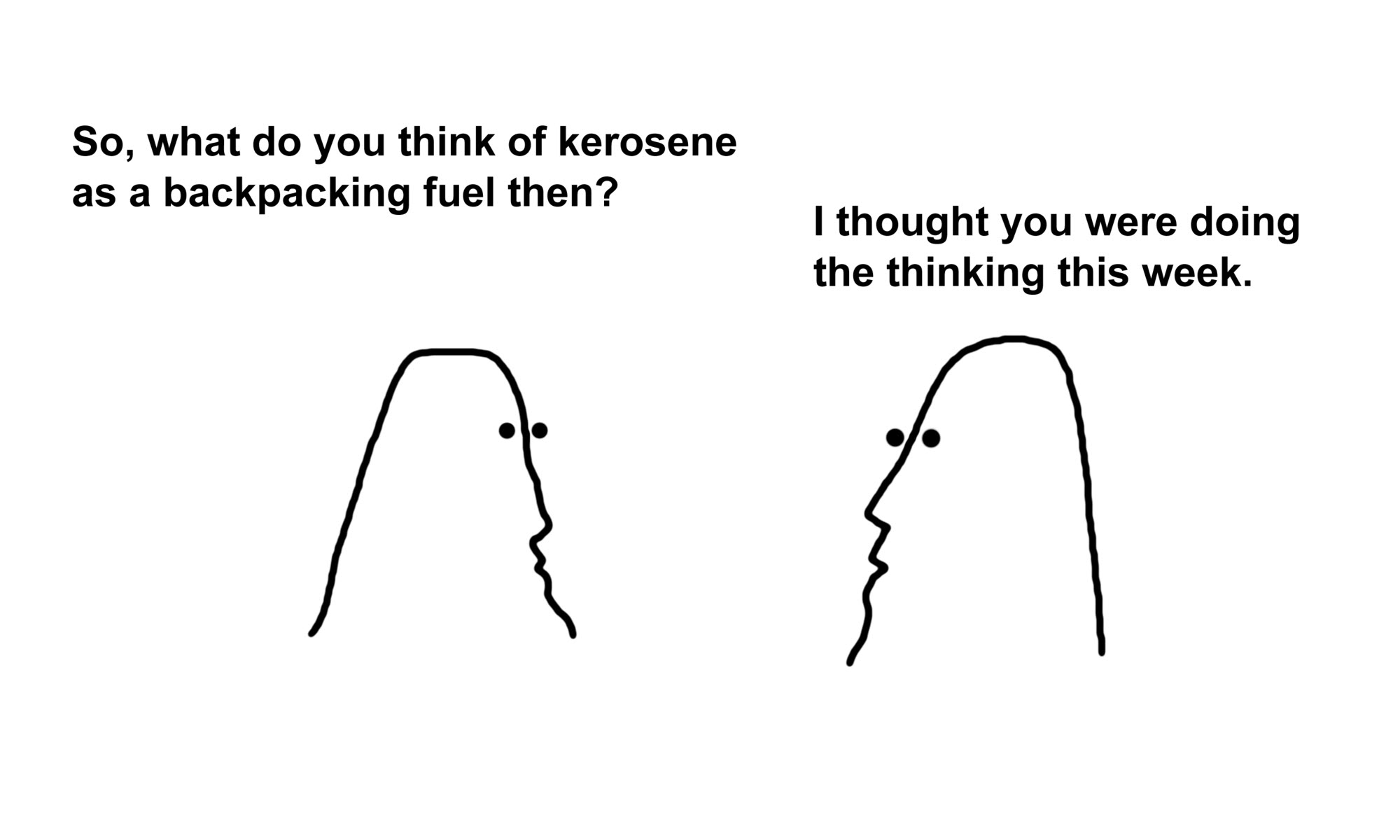One thing that I read about in the late 1950s has stuck with me. I don't see it used or even talked about, which is surprising. It's immensely useful for backpacking.
What I read about was how to moor a boat using a real rope and a piece of rubber rope.
Rubber rope is a thing I've never seen, but it's the idea that counts. The same idea in the world of backpacking shelters works out to be what's called "shock cord", which is just an elastic core wrapped in fabric.
You tie some of this into the middle of a guyline for a tent, or a tarp, or a hammock tarp, and leave a little slack in the real guy line, and this lets the tent or tarp move a little, give a little in the wind, like a flexible tree bending a little, but not snapping off.
The thing is, it's hard to fasten a length of plain shock cord so it stays tied. All knots in the stuff eventually work loose.
Well, you can run this stuff through a little soft metal tube and then crimp the tube, but where do you get super lightweight metal tubing about 1/8" in diameter, in like 1" segments? (3mm by 25mm) There are things like this made for exactly this purpose, but you don't see them just sitting around in every store, and it's baffling what a guy could use as a substitute, so I've been stumped.
Yeah, so today while buying groceries and letting myself be open for ideas about whatever, and also to kill time, I blithely wandered through the women's doodad section at the supermarket and had a nice bingo moment.
Goody. Goody Ouchless Hair Elastics and Goody Ponytail Holders. Yep. Them's things, and they were there. Just about what I wanted, and all ready-made. Cheap too.
Goody.com doesn't have details. You have to follow the links from there to Walmart or Target and check them, and that's where I stole the images you see here. Too good not to steal.
I made a dumb graphic (right below) showing how to use elastic with guylines and it shows way too much slack, but I'm not going to do it over, so use your imagination. And what looks like a knot on each side should be in red. Or something. The graphic should be clearer, but I'm not a pro, hey. (Another D'Oh! moment, brought to you by me.) But it's the idea that counts, and this is one idea that is really fine. Think about it. I believe you've even caught on already. The elastic stretches just so far under heavy stress, and then the actual guyline takes over. Brilliant, as they say.
Guy line with elastic tensioner, showing way too much slack.
Ouchless hair elastics.
Ouchless hair elastics showing thickness.
Ponytail holders.
One ponytail holder, showing "welded" ends — no knots, no crimping, etc. Woot!
Updated tensioner graphic. More schematic but possibly no clearer. At least I tried, eh?
Have anything worth adding? Then try sosayseff@gmail.com
Me? Still trying after all these years.
Etc...
so says eff: sporadic spurts of grade eff distraction
definitions: outdoor terms
fiyh: dave's little guide to ultralight backpacking stoves
boyb: dave's little guide to backpacks
snorpy bits: nibbling away at your sanity
last seen receding: missives from a certain mobile homer
noseyjoe: purposefully poking my proboscis into technicals








